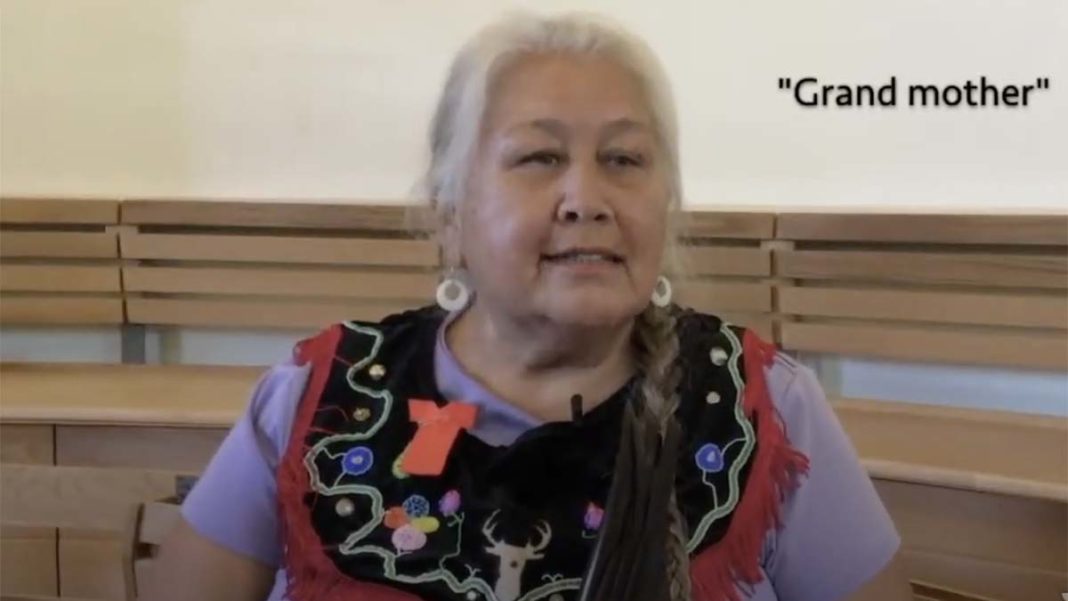Worldwide premiere ushers in UN ‘Decade of Healthy Ageing’
AUNDECK OMNI KANING—A group of Anishinaabe elders from communities across Manitoulin Island gathered in a board room in the early morning hours at Noojmowin Teg to take part in the official launch of the United Nations (UN) Decade of Healthy Ageing videos. The video premiere held personal importance for the elders, as they had created one of the three videos being streamed across the globe by the World Health Organization.
“In 2021, groups of older people from Canada, (and from far-off nations of) Jordan and Togo were involved in a project to ensure their voices were heard from the start of the UN Decade of Healthy Ageing (2021-2030),” explained facilitator Gregor Sneddon, executive director of HelpAge Canada. “This project used the participatory video (PV) methodology to strengthen the meaningful engagement of older people in the UN Decade of Healthy Ageing’s activities. Older people brought their experience, perspectives and expertise to find solutions to issues that matter to them.”
Mr. Sneddon went on to explain that HelpAge Canada convened a group of elders from Manitoulin Island, who addressed the issues facing them in a film they made themselves. “They came up with 37 recommendations on ageing that cover issues such as safe, adequate housing to the preservation of the earth and tradition and how live in peace and forgiveness,” he said. “The world premiere of all three films was on Tuesday, March 29. The films and the recording from Tuesday’s event are available on the Decade’s YouTube channel: ‘Films made by older people for the UN Decade of Healthy Ageing.’” More information about the project is available at www.decadeofhealthyageing.org/find-knowledge/voices. “Noojmowin Teg has donated a set of equipment for the elders to continue their journey as participatory filmmakers,” said Mr. Sneddon, “stay tuned!”
“A huge thank you for participating in the premiere screening of the PVs made by older people in Canada, Jordan and Togo and making it such a success,” said Dr. Etienne Krug, director of social determinants of health with the World Health Organization (WHO) in Geneva, Switzerland in his response to the launch. “We are so proud that finally these videos are now publicly available. We are also delighted that the older people involved were welcomed by the World Health Organization’s Director-General Dr. Tedros, could see their films on a global stage, and hear so many positive reflections on the importance of their voices, rights and contributions. We need to continue to highlight how similar participatory processes can ensure that older people are meaningfully engaged across all the Decade’s action areas.”
Dr. Krug and the other presenters at the pre-screening event spoke live through Zoom, welcoming the participants across the globe. “This event is being interpreted in Arabic, Chinese, French, Spanish and Russian,” said Dr. Krug, who indicated that participants could select their language of choice from an icon on the screen.
“Getting older comes with many benefits and some challenges,” said WHO director-general Tedros Adhanom Chebreyesus in his introduction to the videos. “The films you are about to see show the many ways in which older people engage in their communities on issues that concern them. They also highlight the gaps in systems and services that prevent older people from living the way they could or want to.” He noted that the films, created by older people themselves, are being used to engage decision-makers in creating the policies and services that allow older people to live in their communities.
He pointed to the importance of making those decisions, so those programs are in place when the decision-makers themselves become older. “What sort of world do you want to live in as you get older?” he asked. “Let’s work for that world now.”
Several guests were invited to give their impressions of the videos following the screening, two by pre-taped segments and two live.
Dr. Vappu Taipale, a former government minister in Finland and now board member of HelpAge International, 81, said that the videos were exciting and very different. “Still there were topics familiar to people across the world,” she said. She noted that voice is the key element in battling agism. “This is the core,” she said. “How beautiful voice was expressed in the films.”
She noted that the films highlight the need for age-related data to inform decision-makers, the need for activism and the value of intergenerational bridging. “We need the help of younger generations, municipalities and governments,” she said in bridging the digital divide, going on to point out that the films emphasis the need for global universal programs.
India’s Lysa Brown John, secretary general of CIVICUS (a global alliance of civil society organizations), said the films upend the world-wide stereotype of older people not being able to cope with the digital divide. She pointed to the need for older voices to be heard in the decisions being made about them.
Ecuadoran ambassador to the US, Luis Gallegos Chiriboga, spoke live from Harvard University. He reflected that, although each of the three videos came from different places and lenses, they showed similar needs for a decent present and futures. “If we are lucky enough, sooner or later, we will all experience aging firsthand,” he said. “Thinking globally and acting locally is the key.”
Mr. Chiriboga referenced the Canadian film for the intergenerational engagement with accessibility and infrastructures, “offering physical and emotional support to take care of their culture and nature.” Jordan’s films showed the importance of covering the basic needs of older people, he noted. In the case of Togo, economic opportunities are highlighted as key.
Claudia Mahler of Austria is the UN independent expert on the rights of older persons. “What struck me is that the messages of older men and women are very powerful,” she said. “Speaking on their own behalf.”
Ms. Mahler referenced the elders’ council as an example of how older people were represented by their own powerful voices, outside the familiar trope of being frail and powerless.
Elder Cecilia Pitawanakwat of Wiikwemkoong noted the reference by the speakers of the impact of the residential school system and what was said about elders’ councils.
Elder Leona Nahwegahbow of Whitefish River First Nation noted how elders can provide guidance in their own communities and referenced the upcoming Anishinaabemowin (language) Conference.
“I feel very fortunate to be living in Canada,” said Henry Mandamin of Wiikwemkoong. “I didn’t realize how bad things are in Togo or for displaced persons in Jordan.” He pointed to the Canadian health care system and provincial drug plans that other countries can only dream of.
Elder Urban Mejaki lamented that their own video was presented in English, rather than Anishinaabemowin, noting that the other two videos were presented in their own languages.
Following the video launch, facilitator Gregor Sneddon presented the elders’ group with a video creation kit they can utilize to create more participatory videos in their communities, perhaps even becoming mentors and technical support for others in their communities.
Dr. Krug urged people to “Please share the videos widely to showcase the Decade of Healthy Ageing 2021-203 and inspire more stakeholders to become involved.” He also asked people to consider sharing the videos during local events, as programmatic resources, in advocacy meetings or peer-sharing workshops with other older people.
“We also encourage you to replicate this approach of using PV and explore ways of finding appropriate funding and facilitatory expertise,” said Dr. Krug. “We are developing a practical ‘PV Toolkit for the Decade’ which will help you do that.” Dr. Krug said the toolkit would be published soon and encouraged folks to keep visiting the Voices section of the Decade Platform to look for future resources, including: stories from the field (detailed case studies of each film), the VOICES Blog (starting with key extracts and reflections from the event) and a summary of recommendations from the three films.”





